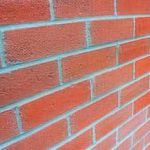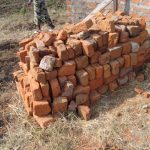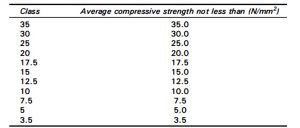Classification of Bricks
Bricks
Bricks are one of the oldest and most popular building materials. The reasons for bricks being very popular
and widely used construction material are,
- They are cheap
- They are durable
- They are easy to handle and work with
Brick can be defined as,
“Bricks are blocks of tampered clay moulded to suitable shapes and sizes while it is still in plastic condition, dried in the sun and burnt, if desired so as to make them more strong, hard and durable.”
Brick is normally rectangular in shape and size is set so as to make it easy for workers to handle it and is usually available made up of three different materials,
- Burnt clay (Most common type in Pakistan)
- Mixture of sand and lime
- Portland cement concrete
The bricks made up of the last two types are usually called blocks and are available in sizes of following proportions,
Length of brick = 2 × width of brick + thickness of mortar
Height of brick = width of brick
Commonly available size is,19 × 9 × 9 cm and 19 × 9 × 4 cm.
Classification of Bricks
There are several categories to classify b-r-i-c-k-s. All those categories have been explained below.
ON FIELD PRACTICE:
Based upon the physical and mechanical properties the bricks are classified into four types such as, first class, second class, third class and fourth class.
a. First Class Bricks:
- These are thoroughly burnt and are of deep red, cherry or copper colour.
- The surface should be smooth and rectangular, with parallel, sharp and straight edges and square corners.
- These should be free from flaws, cracks and stones.
- These should have uniform texture.
- No impression should be left on the brick when a scratch is made by a finger nail.
- The fractured surface of the brick should not show lumps of lime.

- A metallic or ringing sound should come when two bricks are struck against each other.
- Water absorption should be 12–15% of its dry weight when immersed in cold water for 24 hours.
- The crushing strength of the brick should not be less than 10 N/mm2. This limit varies with different Government organisations around the country.
Uses: First class bricks are recommended for pointing, exposed face work in masonry structures, flooring and reinforced brick work.
b. Second Class Bricks:
These are supposed to have the same requirements as the first class ones except that
- Small cracks and distortions are permitted.
- A little higher water absorption of about 16–20% of its dry weight is allowed.
- The crushing strength should not be less than 7.0 N/mm2.
Uses: Second class are recommended for all important or unimportant hidden masonry works and centring of reinforced brick and reinforced cement concrete (RCC) structures.
c. Third Class Bricks:
- These bricks are under burnt.
- They are soft and light-colored.
- They produce a dull sound when struck against each other.
- Water absorption is about 25 per cent of dry weight.
Uses: It is used for building temporary structures.
d. Fourth Class Bricks:
- These bricks are over burnt.
- Badly distorted in size and shape.
- Brittle in nature.
Uses: The ballast of such bricks is used for foundation and floors in lime concrete and road metal.
ON STRENGTH:
On the basis of strength they have been subdivided into the following categories (IS 1077).
ON THE BASIS OF USE:
On the basis of use they have been classified into the following three types,
a. Common Bricks:
This is a general multi-purpose unit manufactured economically without special reference to appearance. These may vary greatly in strength and durability and are used for filling, backing and in walls where appearance is of no consequence.
b. Facing Bricks:
These are made primarily with a view to have good appearance, either of colour or texture or both. These are durable under severe exposure and are used in fronts of building walls for which a pleasing appearance is desired.
c. Engineering Bricks:
These are strong, impermeable, smooth, table moulded, hard and conform to defined limits of absorption and strength. These are used for all load bearing structures.
Classification on the basis of finish, manufacture, burning, types (Click Here to read about them)
Also Read ” Test for Compressive Strength of Brick “


It’s been a great article and i actually wanted to know about these different types of bricks an its classification and i personally feel this article going to clear all of your doubts regarding to this topic so i am going to bookmark this for further reference.Thank You.
Thanks
any book or code or standard for classification of bricks compressive strength ?
Just search
Excellent sir… its really helpful for me
Welcome
Such a great article thanks dude 🙂
welcome
Which is one is best for house construction
1st Class